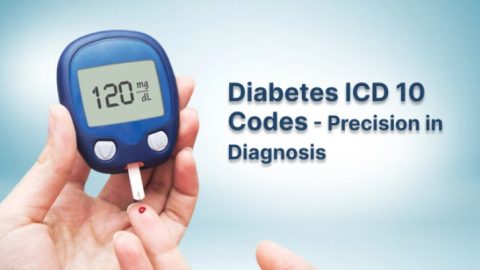Managing blood sugar is one of the most important aspects of staying healthy, especially for people living with diabetes or those at risk of developing it. One of the best tools doctors and patients rely on is the A1C test, a simple blood test that gives a long-term view of blood sugar levels. Unlike daily glucose checks that show results at a single moment, the A1C test reflects the average blood sugar level over the past two to three months.
Understanding how A1C levels are measured and what they mean can help you take control of your health. In this article, we’ll explore the details of the A1C test, provide a complete A1C blood sugar average chart, explain what different ranges mean, and discuss how lifestyle changes can improve your results.
What Is an A1C Test?

The A1C test, also known as the hemoglobin A1C or HbA1c test, measures the percentage of hemoglobin proteins in your blood that are coated with sugar (glucose). Since red blood cells live for about three months, the test shows your average blood sugar during that time frame.
Doctors often use the A1C test to diagnose prediabetes and diabetes, as well as to monitor how well someone with diabetes is managing their condition. Because it provides an average, it can reveal trends that daily finger-stick glucose checks may miss.
Unlike fasting blood sugar or oral glucose tolerance tests, the A1C test doesn’t require fasting. It can be done at any time of day and is widely available in clinics and labs, making it both practical and reliable.
Why the A1C Test Matters
The A1C test is more than just a number—it’s a predictor of long-term health outcomes. Studies show that maintaining an A1C within recommended levels lowers the risk of serious complications, such as nerve damage, kidney disease, vision loss, and cardiovascular problems.
High A1C levels indicate that blood sugar has been running too high over time. This can damage blood vessels and nerves throughout the body. On the other hand, keeping A1C levels within target ranges helps protect organs and improve quality of life.
Even for people without diabetes, the A1C test can serve as an early warning. Detecting prediabetes allows individuals to make changes before the condition progresses to type 2 diabetes.
Understanding the A1C Blood Sugar Average Chart
To make the A1C test results easier to understand, researchers and doctors use a chart that converts the A1C percentage into an estimated average blood glucose (eAG) level. This allows patients to see how their A1C percentage corresponds to the numbers they may see on a home glucose meter.
Here is the A1C blood sugar average chart:
| A1C % | Estimated Average Glucose (mg/dL) | Estimated Average Glucose (mmol/L) |
|---|---|---|
| 4% | 68 mg/dL | 3.8 mmol/L |
| 5% | 97 mg/dL | 5.4 mmol/L |
| 6% | 126 mg/dL | 7.0 mmol/L |
| 7% | 154 mg/dL | 8.6 mmol/L |
| 8% | 183 mg/dL | 10.2 mmol/L |
| 9% | 212 mg/dL | 11.8 mmol/L |
| 10% | 240 mg/dL | 13.4 mmol/L |
| 11% | 269 mg/dL | 14.9 mmol/L |
| 12% | 298 mg/dL | 16.5 mmol/L |
This table shows the clear relationship between A1C percentages and average daily blood sugar. For example, an A1C of 6% corresponds to an average glucose level of about 126 mg/dL, which falls into the prediabetes or early diabetes range depending on other factors.
Normal A1C Levels
For healthy individuals without diabetes, the normal A1C level is below 5.7%. At this range, the blood sugar is considered to be well within a safe level, and the risk of developing diabetes is low.
Maintaining normal A1C levels typically requires a balance of healthy eating, regular exercise, good sleep, and maintaining a healthy weight. Genetics also play a role, as some people naturally process glucose more efficiently than others.
Even within the normal range, keeping A1C as low as possible (without hypoglycemia) is ideal, since every fraction of a percent lower reduces the risk of long-term complications.
Prediabetes A1C Levels
Prediabetes is diagnosed when A1C levels fall between 5.7% and 6.4%. This range signals that blood sugar is consistently higher than normal but not yet high enough to qualify as diabetes.
Prediabetes is a critical warning stage. At this point, lifestyle changes can have a profound impact on reversing or slowing down the progression to type 2 diabetes. Research shows that losing even a small amount of body weight and increasing physical activity can bring A1C back into the normal range.
Without intervention, many people with prediabetes will eventually develop diabetes within five to ten years. That is why monitoring and addressing A1C levels at this stage is so important.
Diabetes A1C Levels
An A1C of 6.5% or higher on two separate tests indicates diabetes. At this level, blood sugar is consistently elevated, and without treatment, the risks of complications increase dramatically.
Managing diabetes involves a combination of approaches: monitoring glucose levels daily, following a structured meal plan, exercising regularly, and in many cases, taking medication or insulin therapy. Doctors may also recommend routine A1C checks every three to six months to assess progress.
Each person with diabetes may have a different target A1C level depending on age, overall health, and risk of complications. For many adults, the goal is to keep A1C below 7%. However, individualized treatment plans are crucial.
Target A1C Levels for Different Groups
Adults with Diabetes
Most adults with diabetes are advised to keep their A1C below 7%. This target is considered effective for reducing risks of complications while still allowing flexibility in lifestyle and treatment.
Older Adults
For older adults, especially those with other health conditions, the target may be slightly higher, around 7.5% to 8%. This is because the risks of very low blood sugar (hypoglycemia) can outweigh the benefits of strict control.
Children and Teens
For children and teenagers with type 1 diabetes, the goal is often an A1C of less than 7.5%, though the exact target may vary. Younger individuals may have slightly higher targets to reduce the danger of hypoglycemia, especially at night.
Factors That Affect A1C Results
While the A1C test is reliable, certain factors can influence results. Conditions such as anemia, kidney disease, and liver disease may affect hemoglobin and lead to inaccurate readings. Similarly, recent blood loss or transfusions can alter results.
Ethnicity can also play a role. Some studies show that African Americans, Hispanics, and Asian Americans may naturally have slightly higher A1C levels compared to Caucasians, even at the same blood sugar levels. Doctors often take this into account when interpreting results.
Pregnancy is another situation where A1C may not give the full picture, so doctors often rely on other glucose monitoring methods.
How Often Should You Get an A1C Test?
For people without diabetes, doctors may recommend an A1C test every three years, especially for those over 45 or with risk factors such as obesity, family history, or high blood pressure.
For individuals with prediabetes, testing may be needed every year. Those with diabetes are usually advised to get an A1C test at least twice a year if blood sugar is stable, and more often—every three months—if treatment has recently changed or blood sugar is not well controlled.
Lowering A1C Levels Naturally
Improving your A1C is often about making consistent lifestyle changes. A diet rich in vegetables, lean proteins, whole grains, and healthy fats can help keep blood sugar steady. Reducing refined sugars and processed foods plays a big role in stabilizing glucose levels.
Physical activity is equally important. Exercise helps muscles use glucose more efficiently, lowering blood sugar both immediately and over time. Even 30 minutes of moderate activity like brisk walking most days of the week can make a significant difference.
Stress management and proper sleep are often overlooked but critical. Stress hormones can raise blood sugar, while poor sleep interferes with insulin sensitivity. Simple relaxation techniques such as deep breathing or yoga can help.
Medications and A1C Control
For many with diabetes, medication is necessary to maintain healthy A1C levels. Options include oral medications such as metformin, which lowers glucose production in the liver, and sulfonylureas, which stimulate the pancreas to release more insulin.
In more advanced cases, insulin therapy may be required. Insulin allows glucose to enter cells, lowering blood sugar effectively. Doctors may adjust insulin doses based on regular monitoring and A1C results.
Other newer medications, such as GLP-1 receptor agonists and SGLT2 inhibitors, not only improve A1C but also provide cardiovascular benefits, making them important tools in diabetes care.
Risks of High A1C Levels
Consistently high A1C levels increase the likelihood of complications. Over time, excess glucose in the blood damages blood vessels and nerves. This can lead to conditions such as diabetic neuropathy (nerve damage), nephropathy (kidney disease), retinopathy (vision problems), and an increased risk of heart disease and stroke.
Even moderately high A1C levels are associated with a higher risk of complications compared to staying within target ranges. That’s why consistent monitoring and management are essential.
Can A1C Be Too Low?
While most people focus on lowering their A1C, levels that are too low can also be dangerous. An A1C below 5% may indicate frequent episodes of hypoglycemia, especially for people taking insulin or certain diabetes medications.
Hypoglycemia can cause dizziness, confusion, fainting, and in severe cases, seizures or unconsciousness. This is why individualized targets are so important—what works for one person may not be safe for another.
Key Takeaways from the A1C Chart
The A1C blood sugar average chart bridges the gap between lab results and daily glucose monitoring. By converting percentages into average glucose levels, patients can better understand how their lifestyle and treatment affect long-term health.
For most people with diabetes, aiming for an A1C below 7% is recommended, though personal goals may vary. Monitoring, lifestyle changes, and medical treatments all work together to keep levels under control and reduce risks of complications.
Conclusion
The A1C test is a cornerstone of diabetes management and prevention. By showing the average blood sugar level over several months, it provides valuable insight that daily checks cannot always reveal. The A1C blood sugar average chart makes it easier to interpret these numbers, helping patients and doctors work together toward better health outcomes.
Knowing your A1C level—and understanding what it means—empowers you to make informed choices about diet, exercise, medication, and overall lifestyle. Whether you’re trying to prevent diabetes, manage prediabetes, or control existing diabetes, this knowledge is one of the most powerful tools available.
FAQs About A1C Blood Sugar Average Chart
What does the A1C blood sugar average chart show?
The chart translates A1C percentages into estimated average glucose levels. This helps you understand how your lab results connect with the numbers you may see on a glucose meter at home.
What is a good A1C level for someone without diabetes?
For people without diabetes, a healthy A1C level is below 5.7%. This indicates normal blood sugar levels and a lower risk of developing diabetes.
What A1C level indicates prediabetes?
Prediabetes is diagnosed when A1C levels are between 5.7% and 6.4%. This range signals higher-than-normal blood sugar and an increased risk of progressing to type 2 diabetes.
What A1C level confirms diabetes?
An A1C of 6.5% or higher on two separate tests is considered diagnostic for diabetes. At this level, blood sugar is consistently elevated and requires medical management.
How often should I get my A1C tested?
If you have stable diabetes, your doctor may recommend an A1C test at least twice a year. If your treatment has changed or your blood sugar is not under control, testing every three months is advised.
Can A1C results ever be inaccurate?
Yes. Certain conditions like anemia, recent blood transfusions, pregnancy, or kidney disease may affect accuracy. Always discuss unusual results with your doctor.
Is it possible to lower A1C without medication?
In many cases, yes. Healthy eating, regular physical activity, weight management, stress control, and better sleep can significantly reduce A1C levels naturally.
What are the risks of high A1C levels?
High A1C levels increase the chance of long-term complications such as nerve damage, kidney disease, eye problems, and cardiovascular issues.
Can A1C be too low?
Yes. An A1C below 5% may indicate frequent hypoglycemia, especially in people using insulin or certain diabetes medications. This can be dangerous and should be discussed with a healthcare provider.
Disclaimer: This article is intended for informational purposes only and should not replace professional medical advice. Always consult with your healthcare provider for personalized guidance regarding your A1C levels, blood sugar management, and treatment options.


